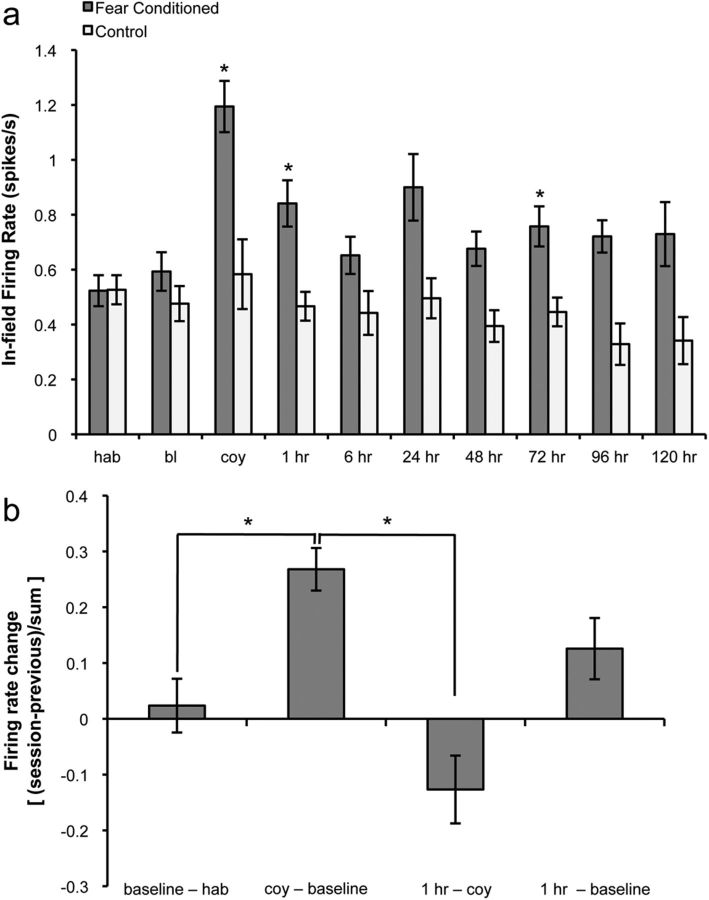Figure 6.
Fear conditioning affects in-field firing rate. a, Histograms showing average in-field firing rate. Fear-conditioned animals displayed significantly higher in-field firing rates during coyote odor, 1 h, and 72 h sessions, with a trend toward significance at other long-term tests (24, 48, 96 h). b, Firing rate changes during the coyote odor and 1 h sessions in the conditioned group. The firing rate change was determined for each cell using the following formula: [session − previous session]/[sum]. The rate change between habituation and baseline sessions was close to zero. During coyote odor exposure, this rate change was significantly higher than the baseline change in firing rate. At 1 h after conditioning, the change in firing rate decreased significantly from the coyote odor session but remained high compared with the baseline session, although this effect did not reach statistical significance (p = 0.058). hab, Habituation; bl, baseline; coy, coyote. Means ± SEM are shown. *p < 0.05.

